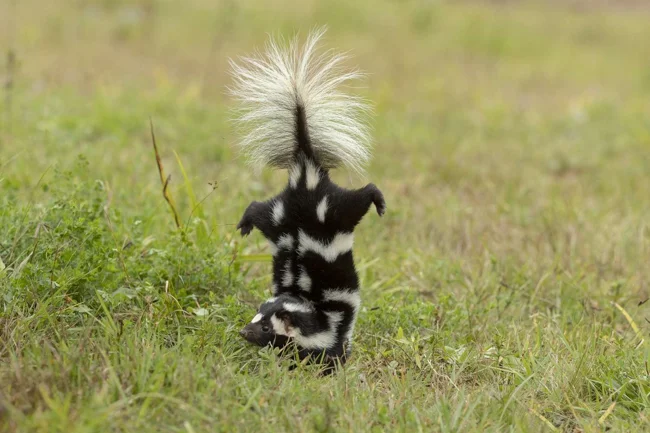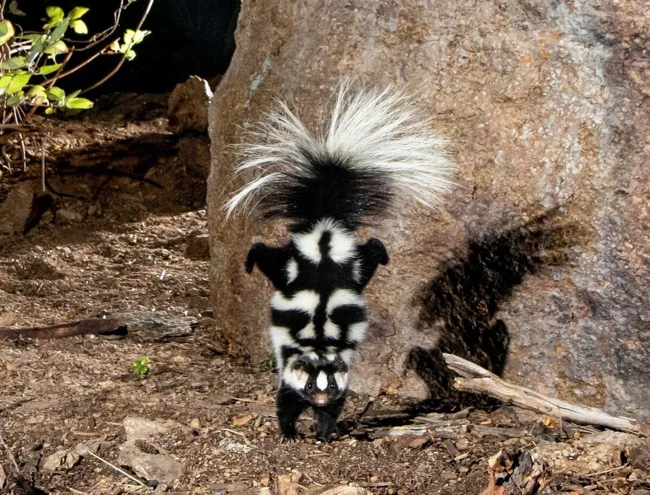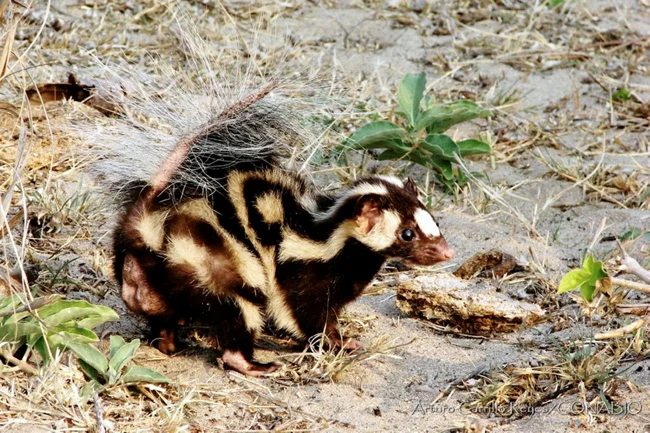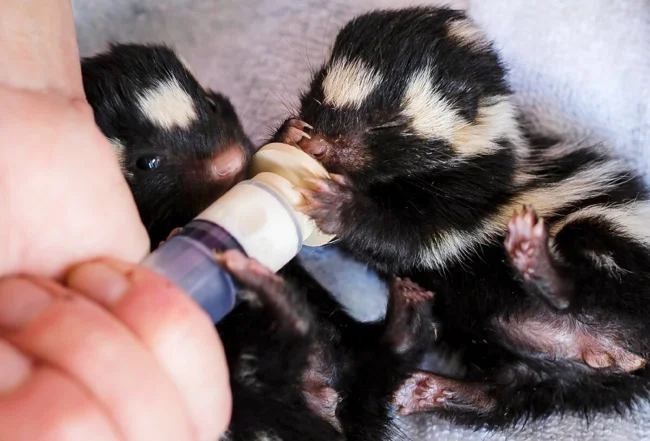American Spotted Skunk: Fighting stance on front legs. If you see such a pose, then just run as fast as you can without looking back (6 photos)
Can a handstand save your life? It turns out yes! But for this you must not be a person from Eurasia, but a cute and slightly beaten American spotted skunk! This animal is a concentrated bundle of courage, because it can take prey from an animal that is 100 times its size! 
Spotted skunks are a genus of furry creatures that live between the southern borders of Canada and Central America. For a long time, scientists could not decide exactly how many species were included in the genus; the number fluctuated between 2 and 14. But in disputes (and genetic examinations) the truth was born: today we know that there are 7 species of spotted skunks. 
The smelly animals are very similar to each other. The main difference between some species and others is the pattern on the black and white coat.
Spotted skunks inhabit all biomes, from dense forests to wastelands. And all thanks to the diet - the animal eats everything it can get its hands on: fruits, worms, insects, snakes and carrion. True, the spotted skunk itself is on the menu of almost all local predators - the poor fellows are almost at the very bottom of the food chain. During the first year of life, about half of the spotted stink bugs die. But a volley of foul-smelling slurry in the face will kill all appetite and sense of smell for the predator! 
But even here there are some nuances: the productivity of the glands is 15 grams of liquid per week, this is enough for only 5 volleys. Yes, powerful - in a 3-meter cone, everything that looked at the skunk will go blind, but the ammunition is too limited. Therefore, before shooting, the animal stands on its front paws; this is its warning stance. It doesn't look scary, but one shot is enough for you to avoid the skunk the next time he starts performing acrobatic tricks. 
The smell of the discharge is incredibly pungent and becomes stronger upon contact with water. According to American zoologists, the clothes that came under fire were traveling home outside the car. After all, once it gets into the cabin, the smell will remain with the car forever. And the most unpleasant thing is that the animals are aware of the effectiveness of their superweapons. Sneaters use the overpowering stench to scare competitors away from their food sources. These skunks are so arrogant and fearless that they can take away a puma's honestly earned dinner! And she, for a second, is 100 times larger than the spotted little one. 
It's not the butt, but those same glands that make a lot of stink.
But skunks stink exclusively towards their enemies. With their relatives they are sociable, loving and affectionate. Chemical weapons producers live both alone and in groups of up to 7 individuals. In the latter case, they take care of each other: they warm, comb and spend time together. Moreover, all these favors and pleasantries occur outside of marriage games and family relationships. 
Animals begin to fall in love in the fall, in September or October. The result is 5-7 fertilized eggs. The cubs grow very quickly, after 30 days they are ready to leave their mother’s womb. But they will be born only in the spring. The fact is that females can freeze pregnancy - the embryos will freeze in development for 6-8 months. The skunk babies will see the world only in April-June. For another month and a half they will feed exclusively on milk, and then they will leave their native nest to chase away cougars and stink all over the area!
